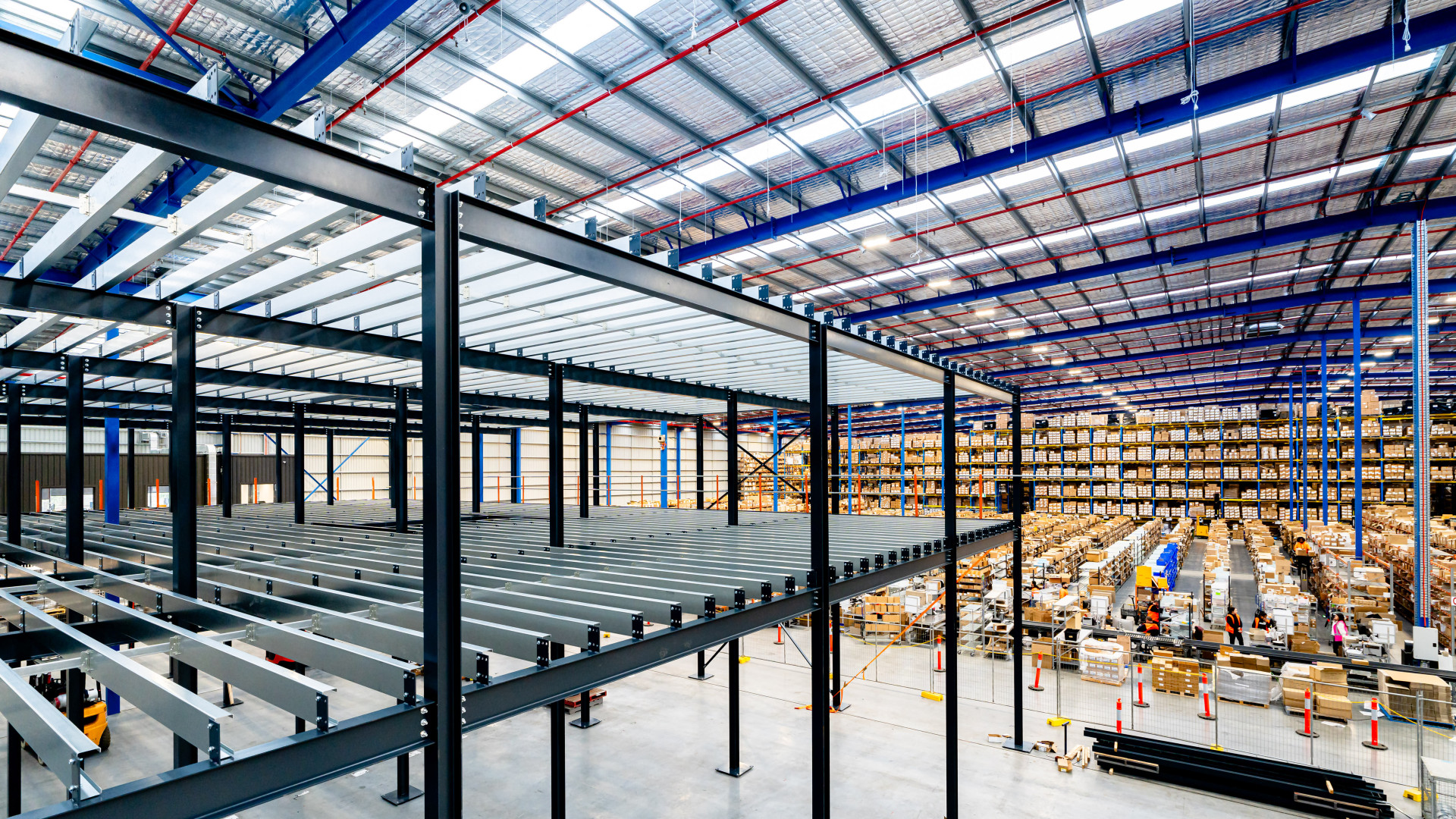Warehouse automation is the future. The tech allows your business to reduce costs, navigate labour shortages, maximise operational safety and productivity, and meet the expectations of customers who are increasingly looking for delay-free delivery.
But automation isn’t something that you can just slap onto your warehouse. It needs to be carefully planned and strategically integrated, based on the needs and realities of your business, and the specifications and limitations of your space.
Automation-ready warehouse design is the practice of preparing your space for automation, to ensure the technology – AGVs, AMRs, AS/RS systems – lives up to its incredible promises.
At Unistor we’ve got a long and proud history of partnering with businesses to prepare logistics environments for automation. From warehouse robotics infrastructure to automation platform design, we’ve helped a wealth of facilities successfully step into an automated future.
In this guide we’ll share how to approach warehouse automation integration, particularly in terms of robotics, including a checklist of structural, spatial and operational considerations that must be addressed before automation systems can be successfully deployed.
Why your warehouse needs to be automation-ready
Warehouse automation technology has become well established in recent years. No longer a curiosity, it’s now implemented in facilities of all types and sizes, and for good reason.
Robots never get sick of low value busywork. They don’t make human errors, they follow rules to the letter, and they can work around the clock. As a result, they’re able to drive all manner of business benefits, increasing safety, accuracy, efficiency and productivity within your warehouse.
But the benefits of automation aren’t a given. Poor planning and implementation can result in bottlenecks, downtime, safety hazards, and in the worst cases, total system failure.
This is why you need to take preparation seriously. By ensuring your facility is automation-ready – that structural, spatial, workflow and logistical considerations are accounted for – you can maximise the benefits that you can reap from automated tech.
Key structural and spatial considerations
If you’re preparing a warehouse fit-out for robotics, what exactly do you need to take into account? Spatial and structural considerations for robotics include:
-
Clearance requirements: Consider the heights and widths of the robotics you plan to install, and the amount of clearance each will require as AMRs, conveyors and shuttle systems (plus the goods they hold) travel their paths. Consider access pathways for humans too, to ensure work and maintenance can be completed.
-
Floor load capacity: Is your floor – both at ground level and on elevated platforms – capable of supporting heavy robotic and structural equipment? Remember to account for the maximum weight of the loads that automated systems will transport.
-
Platform quality: If you need to install extra structures to host your automated system, like mezzanines and elevated platforms. They need to be level, stable and have durable finishes to avoid robots, navigating incorrectly, or having goods move during transport.
-
Ramp or lift integration: Will robots need to navigate between levels or otherwise isolated areas? You may need to install ramps or lifts to help them get from A to B.
Environmental and operational considerations
On top of the tangible considerations mentioned above, there are also a number of automation considerations that are slightly less obvious but every bit as important. Environmental and operational factors include:
-
Lighting and line-of-sight: You need to ensure sensor-guided robots enjoy sufficient visibility. Lighting can be less of a concern for AGVs that follow a predetermined path, or AMRs fitted with LiDAR.
-
Power and data infrastructure: You need to plan for wires and cables to deliver power and data to key components of your automated system, and for autonomous vehicle charging stations.
-
Fire safety and compliance: All relevant safety regulations, from fire sprinkler clearance to egress routes, need to be planned for and implemented in a compliant way.
-
Traffic flow planning: Forklifts, foot traffic and robot paths should be separated to reduce collision risks. In situations where that’s not possible, contingencies that avoid collisions need to be developed, such as physical barriers and rules within the robotic software.
Designing mezzanines and multi-level platforms for automation
At a time when the cost of warehouse space is rising, forward-thinking businesses are looking up. Vertical space is severely underutilised in many warehouse environments, and through the smart use of mezzanines and elevated platforms, you can double or triple your warehouse floorspace.
To design a mezzanine for AMR navigation, shuttles and conveyors, you should strategically utilise gates and walkovers to avoid collisions. You need to ensure the floor is perfectly level and free from potential hazards. Additionally you should always look to separate robot zones from worker areas, having a clear barrier between humans and robotics increases safety and will help you navigate through the approval process.
At Unistor we’re experts at automation integration. Our mezzanines are designed to maximise the benefits of automation, and to adapt as the technology and your business evolves into the future. In certain situations we can also retrofit automation tech to current mezzanine structures, to help you make the most of what you’ve got.
Checklist: is your warehouse ready for robotics?
Is your facility robot-ready? The following warehouse automation checklist can help you find out:
-
Are your aisles wider than the turning circle of your chosen AMR/AGV?
-
Are your floors/platforms currently specified to hold the weight of the system + inventory?
-
Have you mapped robot pathways?
-
Do you have sufficient power and data coverage across the warehouse?
-
Do you have an automation-ready warehouse management system (WMS) in place?
Unistor: creating the structural basis for warehouse automation
True warehouse automation is built on a strong, well-planned foundation. Automated technology will only deliver benefits if it’s set up for success, in an environment that has been carefully crafted to maximise safety, efficiency and productivity.
The best systems will also be capable of handling your current and future needs, evolving with your business as it continues to capitalise on automated technology into the future.
Those are the exact sorts of system we create at Unistor. A forward-thinking team of warehousing automation experts, we help businesses to not only prepare for the future, but dominate it.
Ready to transform your warehouse, and your business, with automation? We are too.



